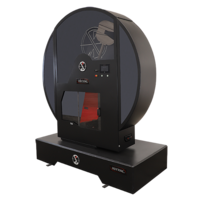
Photo from wikipedia
This study aimed to assess the test-retest reliability of a Wii board-based device to assess the eccentric knee strength. Healthy participants (n = 20, 22.7 [3.4] y, 1.71 [0.09] m, 69 [13] kg)… Click to show full abstract
This study aimed to assess the test-retest reliability of a Wii board-based device to assess the eccentric knee strength. Healthy participants (n = 20, 22.7 [3.4] y, 1.71 [0.09] m, 69 [13] kg) performed 2 assessments-days 1 and 2-of the Nordic hamstring exercise (3 trials per day, 3 min of rest between trials, and 48 h between trials) on a padded board with an attached Wii Balance Board (WBB). A ratchet inelastic strap made the contact between the participant's distal aspect of both legs and the inverted upper surface of the WBB. The means among 3 trials were used to extract the absolute strength and the left and the right limb strengths. No between-session differences were found (P range = .691-.981). The intraclass correlation coefficient range showed excellent results (.905-.926), as the Cronbach α test (above .94). The correlation was high (r > .91; .820 < r2 < .862). The Bland-Altman analysis returned high levels of agreement. The standard error of measurement ranged from 5.56 to 11.07 N and the minimal detectable change from 15.42 to 30.68 N. The percentage of standard error of measurement values were 2.95%, 3.74%, 2.88%, respectively, for absolute strength, right limb strength, and left limb strength. The adapted system showed an excellent cost-benefit relationship with optimal test-retest reliability. The findings suggest that the adapted system, using the WBB, is a reliable method for measuring the eccentric knee strength.
Journal Title: Journal of sport rehabilitation
Year Published: 2022
Link to full text (if available)
Share on Social Media: Sign Up to like & get
recommendations!